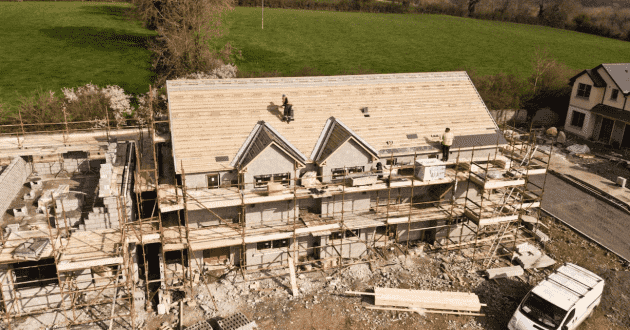A Comprehensive Guide To Concrete Leveling And Commercial Foundation Repair
- - Category: Constrution
- - 09 Oct, 2023
- - Views: 16
- Save
Concrete leveling and commercial foundation repair are indispensable components of construction and maintenance.
In the world of construction and infrastructure, maintaining a solid foundation is paramount. Concrete leveling and commercial foundation repair play crucial roles in ensuring the stability, safety, and longevity of structures. This article provides an in-depth exploration of both concrete leveling and commercial foundation repair, shedding light on their significance, methods, benefits, and the professionals involved.
Understanding Concrete Leveling
What is Concrete Leveling?
Concrete leveling, also known as slab jacking or mudjacking, is a process used to correct uneven concrete surfaces. Over time, concrete can settle, creating unevenness due to factors like soil erosion, water infiltration, or poor compaction during construction.
The Concrete Leveling Process
Site Assessment: Professionals assess the site to determine the extent of the problem and the best approach for leveling.
Drilling Holes: Small holes are drilled into the affected concrete surface.
Injection of Material: A specialized material, typically a mixture of cement, soil, and other additives, is injected into the holes to fill gaps and lift the concrete.
Leveling: The injected material raises the concrete, leveling it and ensuring a smooth, even surface.
Sealing and Cleanup: After leveling, the holes are sealed, and the surface is cleaned.
Benefits of Concrete Leveling
Cost-Effective: Concrete leveling is often more affordable than completely replacing a concrete slab.
Time-Saving: The process is relatively quick, allowing for immediate use of the leveled surface.
Minimal Disruption: Concrete leveling causes minimal disruption to the surroundings, making it suitable for busy commercial areas.
Environmentally Friendly: Utilizing existing materials reduces the need for additional resources.
Commercial Foundation Repair
The Importance of a Strong Foundation
A solid foundation is crucial for any building, especially in the commercial sector. It ensures structural integrity, safety, and longevity, making regular inspections and necessary repairs essential.
Signs of Foundation Issues
Cracks in Walls or Floors: Visible cracks in walls or floors can indicate foundation problems.
Uneven Floors: Floors that slope or are uneven may signify a foundation issue.
Sticking Doors or Windows: Difficulty in opening or closing doors and windows could be due to a shifting foundation.
Methods of Commercial Foundation Repair
Underpinning: This method involves strengthening the foundation by placing additional support beneath it, usually by installing piers or piles.
Piering: Steel piers are driven into the ground to stabilize and lift the foundation to its original position.
Slab Jacking: Similar to concrete leveling, slab jacking can be used to level a commercial foundation by injecting a stabilizing material beneath the slab.
Benefits of Commercial Foundation Repair
Prevents Further Damage: Timely repairs prevent minor issues from becoming major structural problems.
Preserves Property Value: Maintaining a solid foundation helps preserve the value of the commercial property.
Ensures Safety: A structurally sound foundation ensures the safety of occupants and assets within the building.
Compliance with Regulations: Keeping the foundation in good condition ensures compliance with building codes and regulations.
Conclusion
Concrete leveling and commercial foundation repair are indispensable components of construction and maintenance in the commercial sector. Understanding their processes, benefits, and the signs of potential issues is crucial for maintaining the structural integrity and safety of commercial buildings. Regular inspections, timely repairs, and collaboration with skilled professionals are key to ensuring a strong and durable foundation for any commercial structure.

